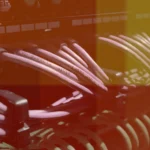Ninja Gaiden is back with a vengeance. Last month, Koei Tecmo surprise released Ninja Gaiden 2 Black, an Unreal Engine 5 remake of an Xbox 360 classic. It’ll follow up on that later this year with Ninja Gaiden 4, the first original game in the series in over a decade. That would be a busy year for any franchise, let alone a long formant one returning to form, but it isn’t stopping there. This year will also bring Ninja Gaiden: Ragebound, a 2D spin on the series from the retro masters at Dotemu and The Game Kitchen.
It’s a perfect series for that kind of treatment. After all, Ninja Gaiden began its life in arcades and on the NES as an old school beat-em-up. Can that formula still resonate with modern audiences who know the series more for its beloved 3D installments that defined the Xbox 360 generation? Based on my first hands-on demo, which toured me through a handful of Ragebound’s levels over an hour, Dotemu is cooking up another polished retro revival that isn’t just out to cash in on nostalgia. It’s a return to a classic genre that was neither broke, nor in need of fixing.
2D action rules
Ninja Gaiden: Ragebound is set around the events of the series NES installment. While Ryu is off in America on a quest for vengeance, Kenji sets out on his own quest back at home. I didn’t get a full sense of the story quite yet during my demo, but it seems like Dotemu is keeping it simple. There are some crystals to be collected and Kenji is the man for the job.
Within seconds, I can see Ragebound’s exact vision. I’m tossed into a quick introductory stage that has me running right and slashing my sword as ninjas and monsters surround me. If you’ve ever played classic side scrollers like the Sega Genesis’ Castlevania: Bloodlines, you’ll feel right at home. I can only attack straight ahead, blocking projectiles with my sword, and tackle some light platforming with a combination of wall jumps and ceiling hangs. It’s the definition of a game that feels the way you remember old games feeling.
That opening is a little deceptively simple, though. After I learn those basics, I’m tossed into a proper tutorial that teaches me more nuances. On the movement side, there’s my hover jump which lets me bounce off of projectiles and a dodge roll. For offense, I can do a forward dash strike by pressing attack and my right bumper at the same time. The first hint of a proper formula twist comes when I learn about charged attacks. If I hit an enemy with a blue aura around it, my next attack will be souped up, letting me cut through big enemies in one swipe. If a glowing enemy isn’t nearby, I can instead hold the attack button and consume a bit of my health to get the same power. It’s a small bit of resource management, but one that peppers a bit of risk-reward play in.
I get the hang of that fairly quickly as I move through stages carefully designed to pay that system off. Beefy enemies are always carefully placed near ones with glowing auras, letting me activate and test that power in a fast, fluid manner. Collectibles are scattered throughout stages that require me to use my hover jump to vault over pots spewing molten balls. I once again think I have the hang of it all until Dotemu springs another twist on me.
Players actually control two characters at once in the main game: Kenji and Kuromi. The latter widens my moveset, as I can press B to throw a projectile forward or Y to arc another upwards. Doing so costs a pink energy that can be regained by killing enemies. That twist turns Ragebound into a more complex platformer than it appears to be in its initial slash-em-up levels. For one, the enemies that raise my attack will either grow pink or blue, so I need to hit them with the right attack to get the buff. It adds a bit of color matching puzzle work to the combat, rewarding me for using all my attacks instead of spamming one.
Soon enough, I’m using Kuromi’s powers to move through timed traversal gauntlets that have me using my projectiles to teleport over spike pits. In a seaside level, I need to cross water gaps by bouncing off of leaping fish using Kenji’s hover slash. There’s a bit of depth to it, but not enough that it feels removed from the games that preceded it. It’s a natural evolution of the 2D format that we reasonably could have gotten in the 90s.
Of course, no retro side scroller would be complete without some boss fights that require mastery of each system. The best one I played put me up against two sea serpents who popped up on either side of a rickety wooden platform. I had to slash at one while avoiding its projectiles, occasionally leaping to a high platform to avoid a stream of fire. One telegraphed slam attack marks it with a blue aura, allowing me to get my charge attack and stun one of the creatures briefly. It’s a 2D thrill that feels more active that your typical dodge-and-attack battle.
It comes as no surprise that Ninja Gaiden: Ragebound is feeling so fine-tuned. Dotemu is committed to making classic games that don’t just feel like cynical cash grabs, but like proper continuations of the franchises we left behind in the 90s. The Game Kitchen is a great partner to handle that vision for Ninja Gaiden, as its Blasphemous games successfully bring modern iteration into 2D adventures built from rich pixel art. Ragebound embraces tradition at every turn, staying true to its roots without simply wheeling out a nostalgic schtick. If the final game is as fun as what I’ve played here, there’s a good chance it could steal Ninja Gaiden 4’s spotlight.
Ninja Gaiden: Ragebound launches later this year for PS4, PS5, Xbox One, Xbox Series X/S, Nintendo Switch, and PC.
Read the full article here













